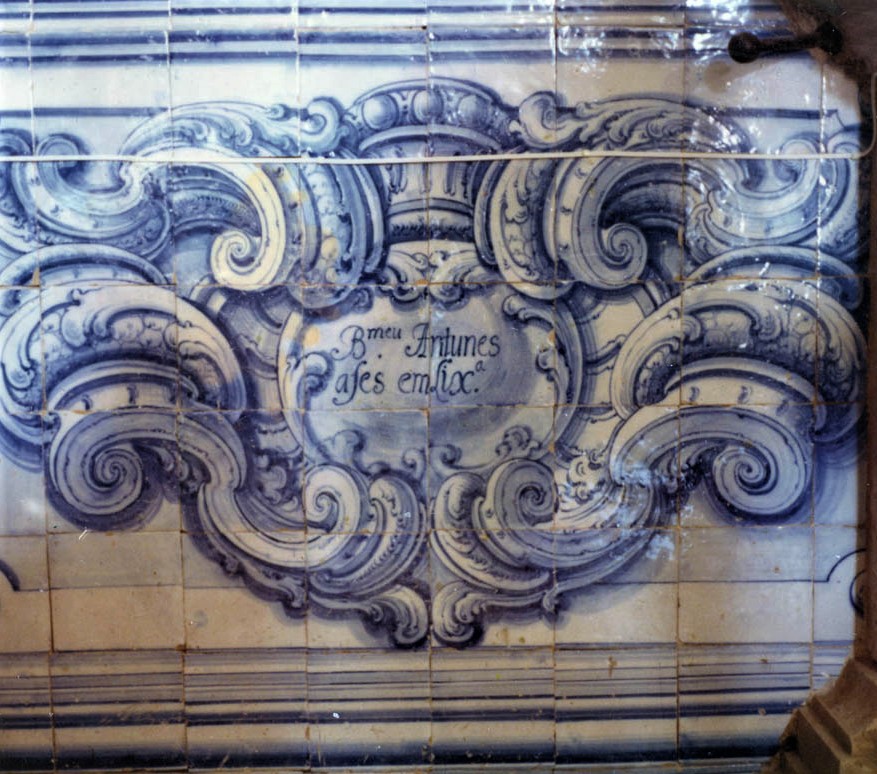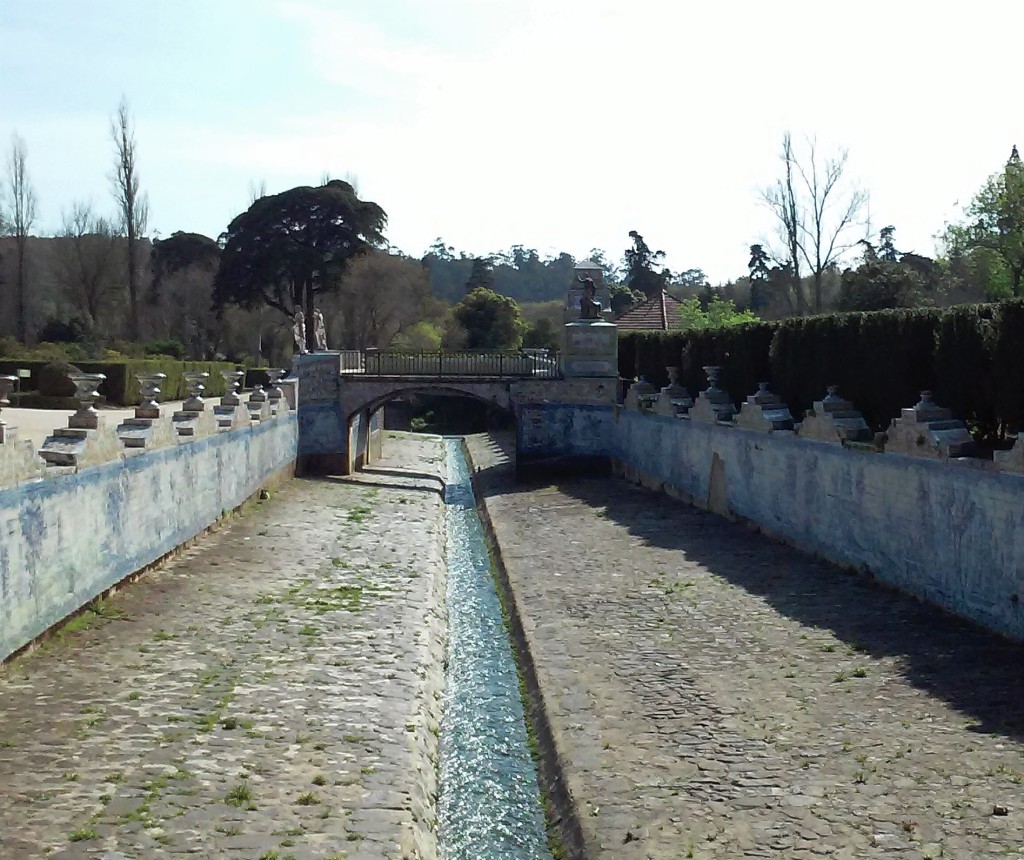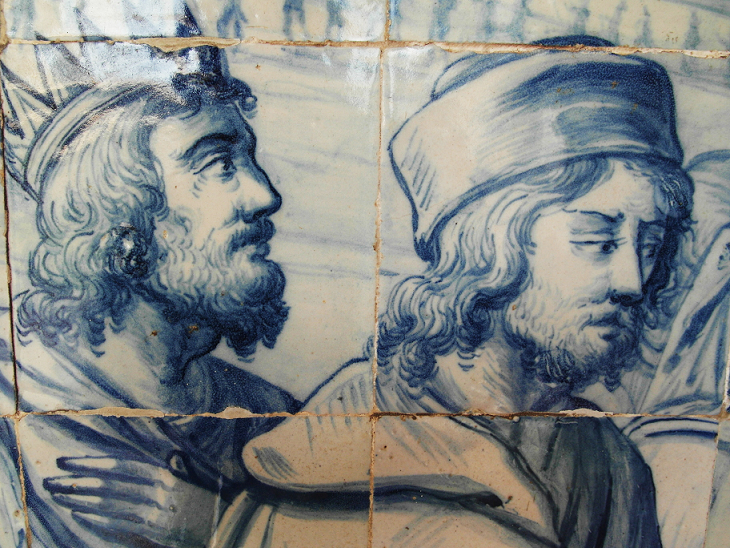The Great Lisbon Workshop was a society of painters and potteries created by the activity of the master tiler Bartolomeu Antunes (1688-1753), whose main objective was to supply all the tile works on the royal villas and palaces, particularly those supervised by the Casa de Repartição das Obras.
To carry out this large volume of works, Bartolomeu Antunes joined his brother, João Antunes, and his nephew, João Nunes de Oliveira, also tilers. With this strategy of gathering all the royal orders, Bartolomeu Antunes came to dominate the production of tiles in Lisbon, in the second quarter of the 18th-century.
The main characteristic of this informal organization was to combine the work of several painters and potteries without constituting a single industrial unit, something that contradicted the principle of individual independence of the various professionals and, at the same time, would imply solidarity of money accounts that the interveners considered harmful in the long term.

At the Great Lisbon Workshop, the painters and potters maintained their autonomy while collaborating with the master Bartolomeu Antunes, with independent relations with other tilers masters, usually responsible for low-priced projects.
As far as we know, the only important absence in this Lisbon structure was the painter Teotónio dos Santos (1688-1762) that did not establish any form of collaboration with Bartolomeu Antunes.
After Bartolomeu Antunes, it was his son-in-law, the painter Nicolau de Freitas (1703-1765), who benefited the most from the creation of the Great Workshop, taking responsibility for the highest paid part of the tiles to the convent of São Francisco da Bahia (main chapel of the church and lower cloister), to the convent palace of Nossa Senhora das Necessidades (academic hall and cloister), and to the gallery of the “new” Patriarchal Church, destroyed by the great earthquake. As Bartolomeu Antunes’ post-mortem inventory demonstrates, the painter received thirty thousand réis per every thousand tiles painted for this church, a sum well above the remunerations of the painter Valentim de Almeida (1692-1779).
The primary collaborator of Nicolau de Freitas, was the painter Joaquim de Brito e Silva (1716-1782), probably his apprentice between 1735 and 1740.
In 1754, when he claimed debts from the master tiler Bartolomeu Antunes, Joaquim de Brito ran a small workshop in the company of three young painters – Manuel António de Góis (1730-1790), Eusébio da Silva (c.1735-act.1754) and his nephew Sebastião Vieira (c.1730-act.1754) –, who were unanimous in declaring that the painter had done many works for the master tiler.

Within the scope of the multiple partnerships established by the Great Workshop, Nicolau de Freitas painted the tiles of the noble staircase, Joaquim de Brito those of the Aula da Esfera and Valentim de Almeida those of the atrium of the sacristy of the Santo Antão-o-Novo College, in a set made between the years 1740-1750.
In this same cycle, Joaquim de Brito, José dos Santos Pinheiro (1714-1783), Valentim de Almeida and Sebastião de Almeida (1727-1779) carried out the monumental campaign of tiles for the walls and banks of the Quinta Real de Queluz artificial lake, documented in receipts of the master tiler João Nunes Oliveira, in 1755.
After the death of Bartolomeu Antunes in 1753, and the economic crisis caused by the great Lisbon earthquake in 1755, Sebastião de Almeida, José dos Santos Pinheiro, Valentim de Almeida, Joaquim de Brito e Silva and Bernardo José de Sousa (1738- act.1790) formed a society of tile painters. This new society did nothing more than confirm the professional relationships previously established by Bartolomeu Antunes’ workshop, this time to defend the interests of tile painters against the constant decrease in prices paid by master tilers.
Active from 1764 to 1769, the society did not settle in a single industrial unit, but instead allowed collaboration with the various potteries and even with several tilers, as long as the painters charged a minimum price.
More importantly, the society established a line of continuity among the works of several painters, who were now led by Sebastião de Almeida, the future master director of the Royal Tableware Factory. In this period, as a direct consequence of this type of professional organization, tile painters remained anonymous, without identifying the tiles with their signatures.
ESSENTIAL BIBLIOGRAPHY
MENDES, Rui. Companhias de azulejadores e de pintores de azulejos activas em Lisboa entre 1757 e 1773: novos contributos para o estudo da produção de azulejos no período pombalino. ARTis ON, n. 6, Junho de 2018, pp. 45-59.



One reply on “The Great Lisbon Workshop”
[…] by the Great Lisbon Workshop, led by the painters Sebastião de Almeida and José dos Santos Pinheiro, the tiles represent […]
LikeLike